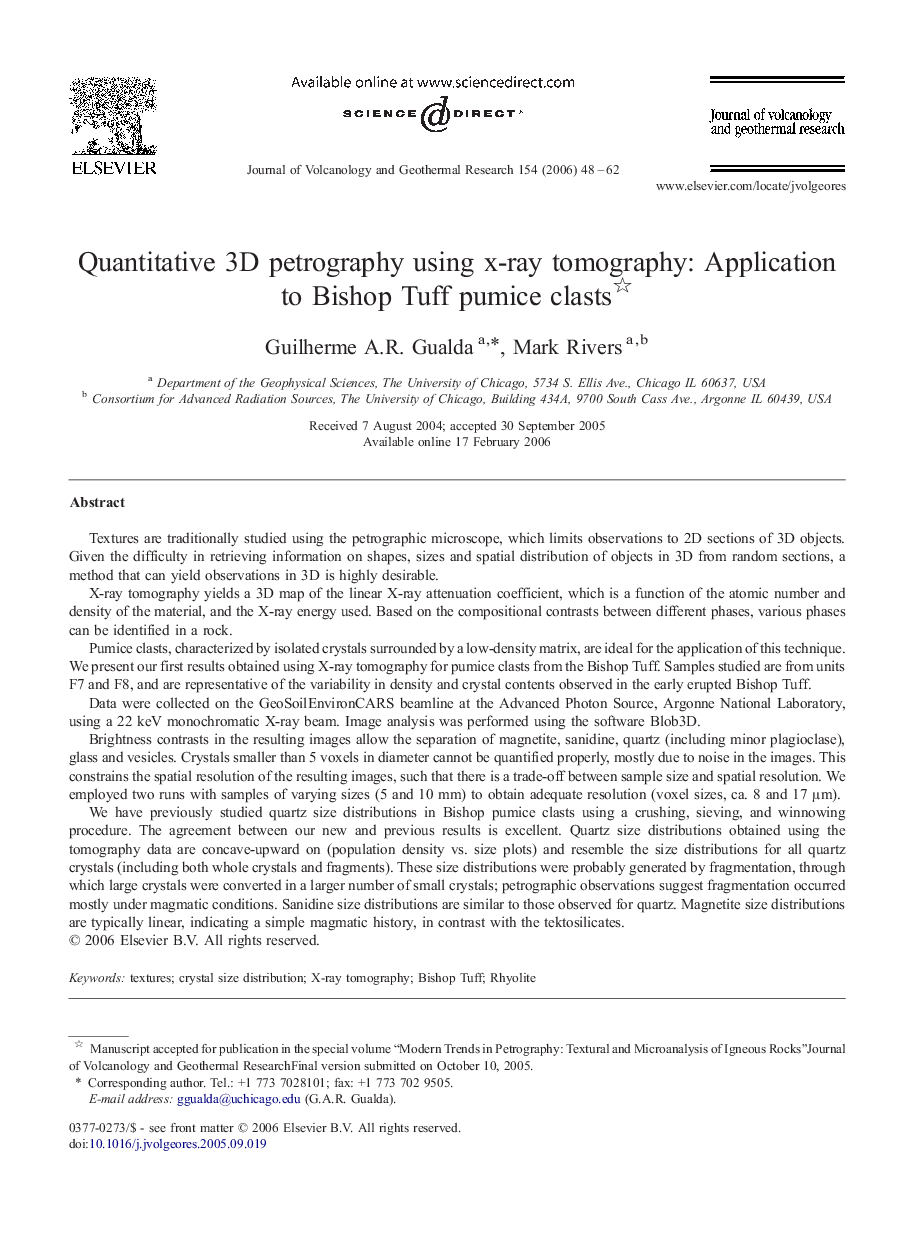| کد مقاله | کد نشریه | سال انتشار | مقاله انگلیسی | نسخه تمام متن |
|---|---|---|---|---|
| 4715086 | 1638478 | 2006 | 15 صفحه PDF | دانلود رایگان |

Textures are traditionally studied using the petrographic microscope, which limits observations to 2D sections of 3D objects. Given the difficulty in retrieving information on shapes, sizes and spatial distribution of objects in 3D from random sections, a method that can yield observations in 3D is highly desirable.X-ray tomography yields a 3D map of the linear X-ray attenuation coefficient, which is a function of the atomic number and density of the material, and the X-ray energy used. Based on the compositional contrasts between different phases, various phases can be identified in a rock.Pumice clasts, characterized by isolated crystals surrounded by a low-density matrix, are ideal for the application of this technique. We present our first results obtained using X-ray tomography for pumice clasts from the Bishop Tuff. Samples studied are from units F7 and F8, and are representative of the variability in density and crystal contents observed in the early erupted Bishop Tuff.Data were collected on the GeoSoilEnvironCARS beamline at the Advanced Photon Source, Argonne National Laboratory, using a 22 keV monochromatic X-ray beam. Image analysis was performed using the software Blob3D.Brightness contrasts in the resulting images allow the separation of magnetite, sanidine, quartz (including minor plagioclase), glass and vesicles. Crystals smaller than 5 voxels in diameter cannot be quantified properly, mostly due to noise in the images. This constrains the spatial resolution of the resulting images, such that there is a trade-off between sample size and spatial resolution. We employed two runs with samples of varying sizes (5 and 10 mm) to obtain adequate resolution (voxel sizes, ca. 8 and 17 μm).We have previously studied quartz size distributions in Bishop pumice clasts using a crushing, sieving, and winnowing procedure. The agreement between our new and previous results is excellent. Quartz size distributions obtained using the tomography data are concave-upward on (population density vs. size plots) and resemble the size distributions for all quartz crystals (including both whole crystals and fragments). These size distributions were probably generated by fragmentation, through which large crystals were converted in a larger number of small crystals; petrographic observations suggest fragmentation occurred mostly under magmatic conditions. Sanidine size distributions are similar to those observed for quartz. Magnetite size distributions are typically linear, indicating a simple magmatic history, in contrast with the tektosilicates.
Journal: Journal of Volcanology and Geothermal Research - Volume 154, Issues 1–2, 1 June 2006, Pages 48–62